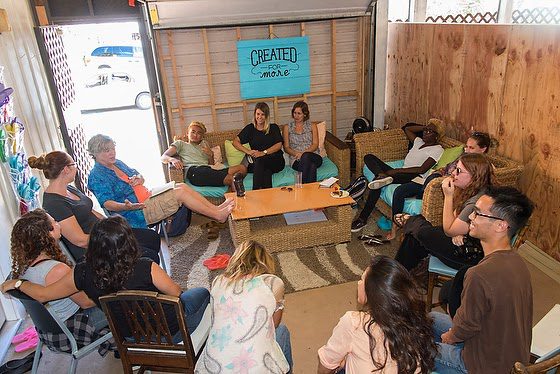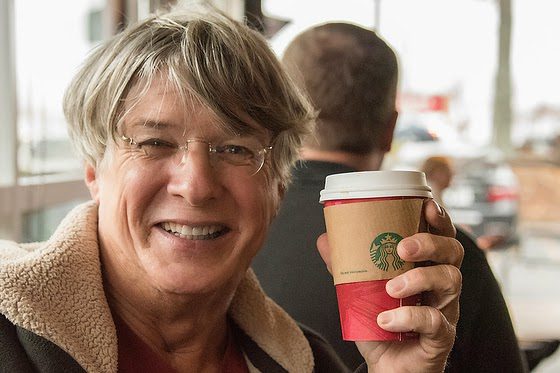Robin Rayne is an Atlanta-based photojournalist for international and domestic magazines and newspapers. Robin is also producing a documentary film on people with significant disabilities who have been mandated to relocate from state hospitals into community.
It was only 96 hours on an island in the middle of the Pacific, but the joy and rewards that came from leading a class of young, passionate student storytellers will rank high on my list of life experiences — even though I learned as much for myself as I likely taught them.
I was apprehensive when the University of the Nations first asked if I would consider flying to Kona, Hawaii to teach for a week at its School of Photographic Communication (SoPC) on the Youth With a Mission campus. I was one of a handful of journalists recruited as instructors.
 |
| Nikon D750, AF-S NIKKOR 28-300mm f/3.5-5.6G ED VR, ISO 1000, ƒ/5.6, 1/100 |
I know some photographers for whom teaching, coaching and counseling seem almost effortless. They are full of knowledge and experiences that just cry to be shared.
I’d never taught a photo class before. But I pushed through my anxiety and said yes anyway. For weeks I pondered what I’d have to offer. What could I share that was different from the others?
What kept coming back to me was ‘the story.’ Because what we do is really is all about the story, or narrative, or whatever we’re calling it these days.
Without journalistic depth, all those creative, artful and technically brilliant images in the world will remain nice pictures for a gallery or photo magazine, but they fall short as real journalism.
 |
| Nikon D750, AF-S NIKKOR 28-300mm f/3.5-5.6G ED VR, ISO 4000, ƒ/8, 1/100 |
In 2015, our culture has become one of viewers – on our laptops, iPads, tablets and smartphones – than readers of the printed page.
As journalists, we need to use all the tools available to communicate: still photos, cinema, text, audio and design.
Photojournalists are first of all journalists. The world is brimming with photographers, but it’s our job to tell stories. Sometimes we have editors who direct us to specific people or situations to capture, but much of the time it’s up to the photojournalist to find someone that moves a story forward.
Everyone has a story if we dig deep enough. Too often we take the easy way, the low-hanging fruit. We don’t dig. We don’t get names, or if we do, we only get the top layer. We often don’t get the rich story because we don’t ask the right questions, or we don’t know how to ask questions and really listen to the answers.
 |
| Students interview coffee grower in downtown Kailua-Kona, Hawaii. [photo by Robin Rayne] |
So that’s what our class worked on for several days. As an exercise, I asked the students to pair off and interview each other, digging for something that that was interesting, curious, unique — or that had conflict.
We split into two production ‘crews’ and talked about a common narrative that had conflict. The students shaped and refined their questions for a handful of prospective subjects and then left the campus in search of a multimedia story that could be told in two minutes.
 |
| Nikon D750, AF-S NIKKOR 28-300mm f/3.5-5.6G ED VR, ISO 180, ƒ/4.5, 1/100 |
A few learning moments quickly surfaced as the crews approached their mission.
Rule Number One: The story is king.
Other things to remember:
2. Do your research and think hard about what the story really is. Answer the question: What’s the conflict? Why should the viewer care about your subject or the story?
3.Don’t fall in love with your original idea. Have a “Plan B.’ and a ‘Plan C, D, E and F’ if necessary.
4. Be willing to dig for the real story and follow wherever it goes.
5. Look for emotional, spontaneous moments, establishing shots and appropriate b-roll.
6. You can never have enough b-roll.
7. Know your equipment. f4 at 125th sec. outside on a bright day is probably going to be overexposed. And make sure the record button is ‘on’ when it is supposed to be.
8. Watch your monitor. Know your camera, microphones and cables.
9. Always bring a reflector, tripod and fresh batteries.
10. Listen to the subject’s answers. If they’re stiff, ask the subject to say it a different way.
11. Delegate responsibility so each crew member knows her/his job.
12. Watch out for things other crew members might have missed.
13. Mediocre images can be forgiven if the audio is solid and clean. Bad audio will lose viewers even if the images are stellar.
14. Kona coffee is awesome.
 |
| Students learn how to use microphones with their DSLRs to interview subjects. [photo by Robin Rayne] |
Watching the crews learn by doing was the best way to teach. All the things I knew to be true were hammered home to me as we watched the final pieces together. We learn from screwing up more than we learn by our successes.
I hope the students learned some things they might not have known before. Sitting among them rather than in front of them was a great equalizer. Because none of us has ‘arrived’ and knows everything. We ought to be learning until the day we die.
 |
| Students talk to a local shop employee in Kailua-Kona, Hawaii. [photo by Robin Rayne] |
Now I have a few more friends who will go on to do amazing things in their lives. I’m deeply blessed to know them. I really liked what we accomplished together that week.
They all rocked, and I hope we’ll stay connected.
Aloha,
robin rayne nelson
http://assignmentatlanta.com/

